What is this ?
This is a device based upon the ESP32 TouchDown to gather vital signs of humans without contact. Up to a range of 2 meters movement of ones Lungs an Heart can be measured. Also the position of the patient can be located. A thermal imager provides body temperature information.
How dose it work ?
Using a new 60 GHz Doppler Radar - usually used to gather positions of airplanes up to great distances - with this technology / principle it is possible to measure very small displacements, depending on the used wavelength. A wavelength of a 60 GHz wave correspondents to a bit less than 5 mm. The 60 GHz transmitter is highly directional and the module has 4 receiver antennas, detecting the reflected 60 GHz (micro-) wave. The reflected wave arises from the boundary layers from air to torso and low density lung tissue to heart bounderie. The transmitter power is less than 4 mW and therefore safe to use.
The thermal imager is a MLX90640 110° FOV camera. The maximal temperature detected is plotted as graph.
What dose it show ?
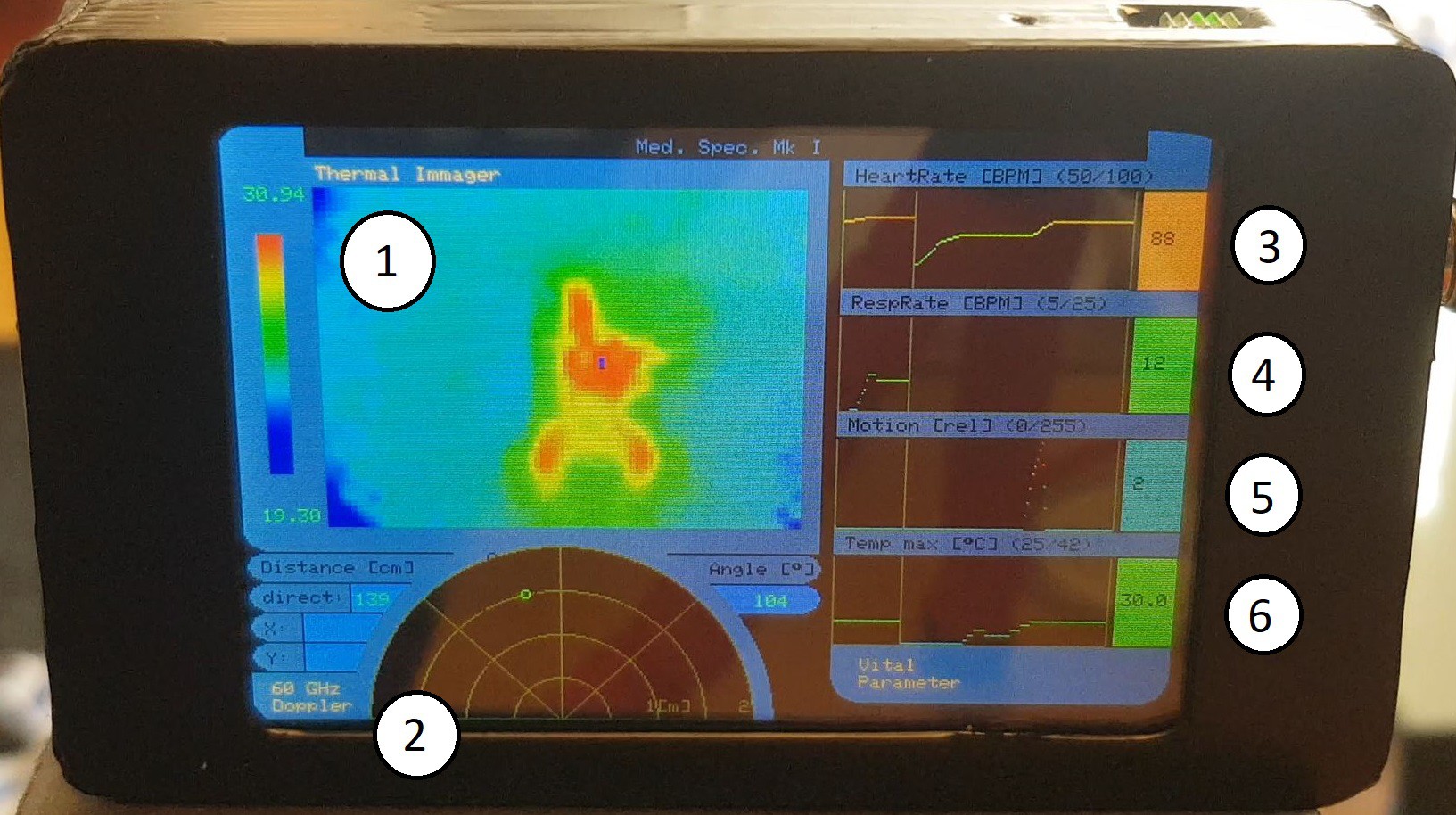
1) On the top left there is a thermal image of the patient.
2) Underneath the positioning system is showing the location of the patient.
3) From the top right is shown the heart rate on a graph from 50 to 100 bpm. The right box shows the last read out. The orange color indicates a elevated heart rate.
4) The second Graph is plotting the respiratory rate (min.:5 / mx.: 25), also with value / indicator field.
5) Next is a relative motion indicator. A resting patient is mandatory for proper measurements.
6) The last graph on the bottom right shows the maximum temperature of the thermal imager, with a fixed min.: 25°C and max.: 42°C.
Vital signs reaching critical limits turn the indicator boxes on the right from blue to green to red, depending on the value measured. Critical information should should see the user as soon as possible - at least that was in my mind.
What use could it have ?
In the medical field it could have wide use. The vital signs of critically injured patients could be acquired quickly without contact. The thermal camera could show hot spots or internal injuries. A general long therm monitoring of vital signs.
How fast is it?
I wish it was faster. But: hey! Its only 2022! First readings of the heart- and respiratory-rate will appear after 10 sometimes 30 seconds. The Radar Module has its own chip and it needs time for gathering data to analyze it. The thermal image updates almost 2 time the second and it also gets some interpolation, for a less pixellated picture.
Could it get faster?
It could. The data stream of the 60 GHz radar module also includes the raw data for heart- and respiratory-signals. I think a FFT could figure out some faster results, than the already processed delivered data.
How accurate is it?
The Datasheet claims to be 90% and 85% sure about respiratory- and heart-rates. All i have to check is my mobile phone build in oxymeter, with also can detect the heart rate. It was less than 5% off to this 'reference. But sometimes it takes some time for it to determen a confident information. Thermal imager: The max temperature of a human measured with the MLX90640 decreases with distance. This could be compensated with the measured distance. First test showed a temperature drop of 1 °C every 50cm.
Complications
A driver for the 60 GHz Doppler Radar for microcontrollers is / was not developed, so a diver-lib had to been developed. Since the module is sending all information via serial is just must been parsed and readout to according variables. With the help of a UART protocol, provided by seeed my college a rudimentary parser could be build up.
Further development?
Yea, i need a menu to go in different modes. One would be a Serial pass-through from Radar Module to USB port going to the computer, so i can use the software provided by the manufacturer. Another menu would...
 j
j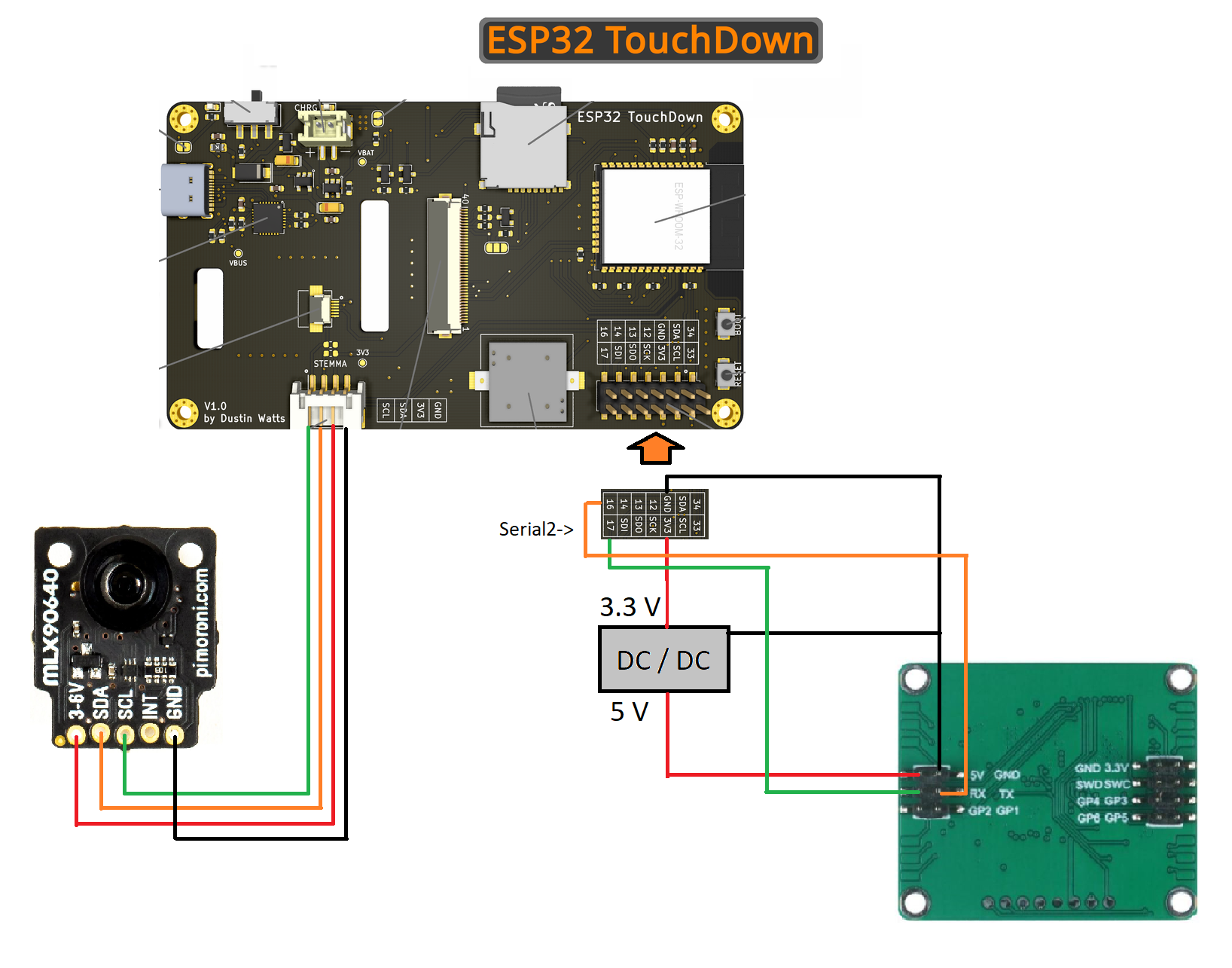
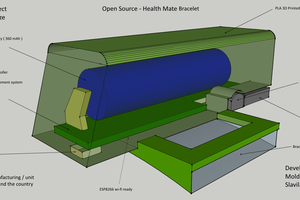
 Moldovanu Ionut
Moldovanu Ionut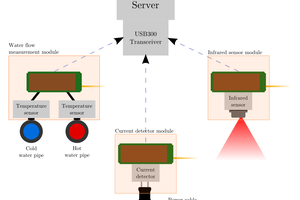
 karpour
karpour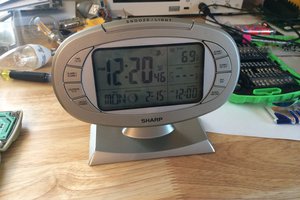
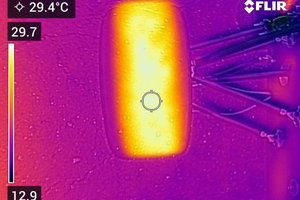
 PUTMotorsport
PUTMotorsport